Winter is here, and the days are shorter, and temperatures drop. The desire to create internal spaces that convey comfort and well-being strengthens. For interior designers, winter is an opportunity. Have you ever considered the potential of exploring the power of fabrics and textures, essential elements to transform any space into a warm and inviting haven? Faced with this challenge, how can you choose the right materials to ensure the space is cozy, functional, and aesthetically pleasing?
"Texture is the weight and thickness of a fabric and how it feels to the touch."
Alexandra Stoddard, author, interior designer and lifestyle writer
In this article, we will explore how fabrics and textures can be used strategically to create spaces that allow thermal comfort but convey a feeling of welcome and sophistication. Throughout this text, we will see which materials are perfect for winter, how to combine different textures to increase the depth and charm of space, and how the layering technique can transform a simple decoration into a warm and comfortable area.
The choice of fabrics is more than a matter of aesthetics. It's also about how these materials can enhance a space's sensory experience. The soft touch of velvet or the warmth of a wool blanket are small details that, when chosen well, make all the difference. Get ready to discover valuable tips and essential techniques for creating spaces that embrace and welcome throughout the cold season.
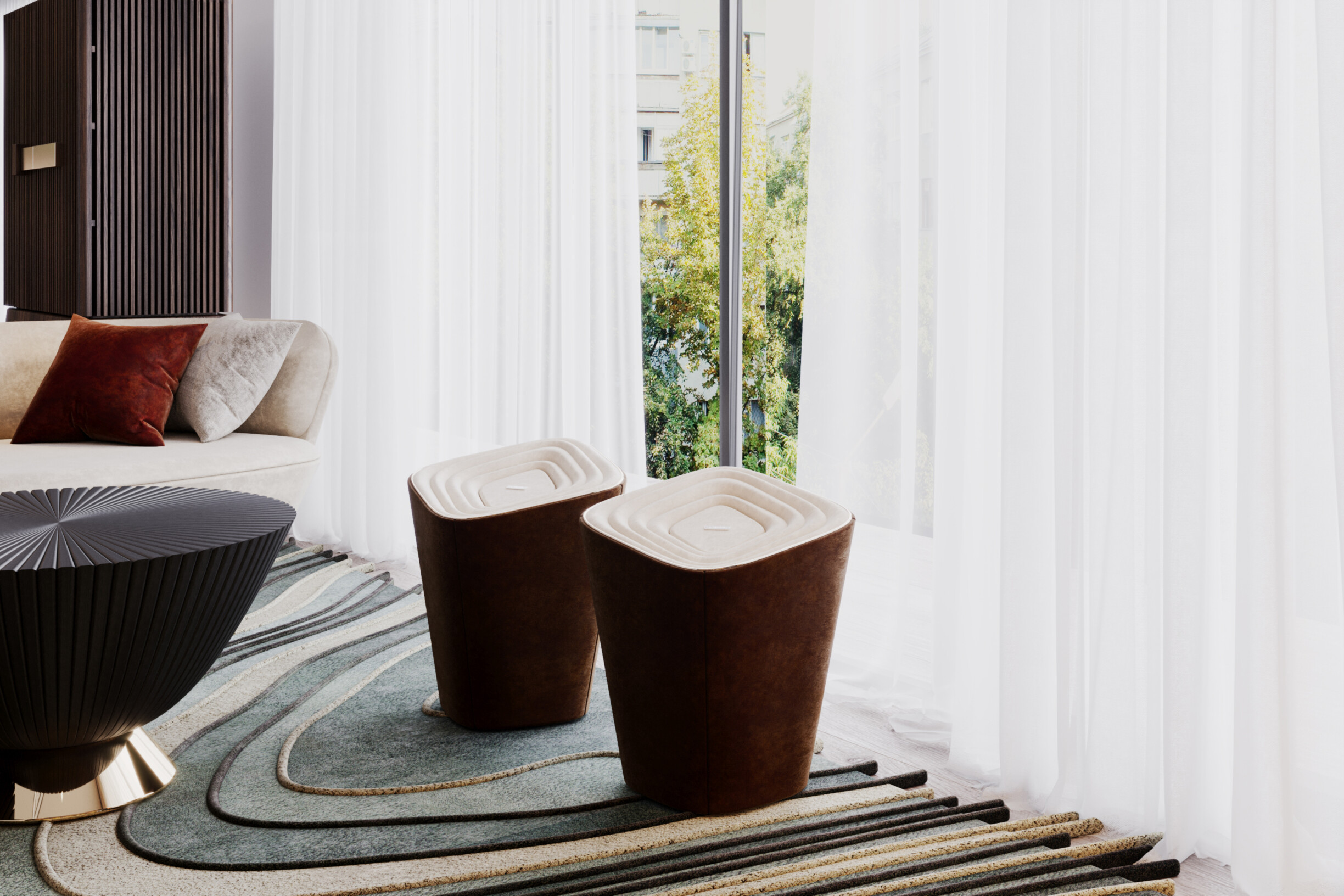
When winter arrives, creating welcoming spaces becomes a priority for interior designers. Choosing the right fabrics not only influences aesthetics but also directly impacts the thermal sensation and overall comfort of a space. The ideal combination of fabrics can transform a cold and impersonal room into a true haven of comfort.

To help create more comfortable and warm spaces during the winter, it is essential to consider fabrics' functionality, style, and visual appearance. These are some of the crucial aspects you should pay attention to when selecting fabrics for the cold season:
Heat retention capacity: heavier fabrics, such as wool, velvet, or flannel, help retain heat, making them ideal for colder rooms;
Touch and comfort: cotton or chenille have a pleasant softness to the touch, providing a cozy feeling, even if they have lower thermal efficiency;
Aesthetic harmony: the aesthetics of the fabrics must be compatible with the sensation of visual and tactile comfort. Velvet or cashmere are warm fabrics and offer a luxurious feel;
Durability and resistance: in interiors, especially in areas of greater use, the fabrics chosen must resist wear and tear, remaining functional and beautiful over time. This is where the Martindale Test becomes a valuable tool for interior designers. This test evaluates the fabric's resistance to abrasion, helping to determine whether it is suitable for high-wear areas. Choosing fabrics that score high on the Martindale Test ensures that the coziness and look of the space remain impeccable over time, even in contexts of heavy use. After all, durability should not be compromised when creating an inviting and functional home.
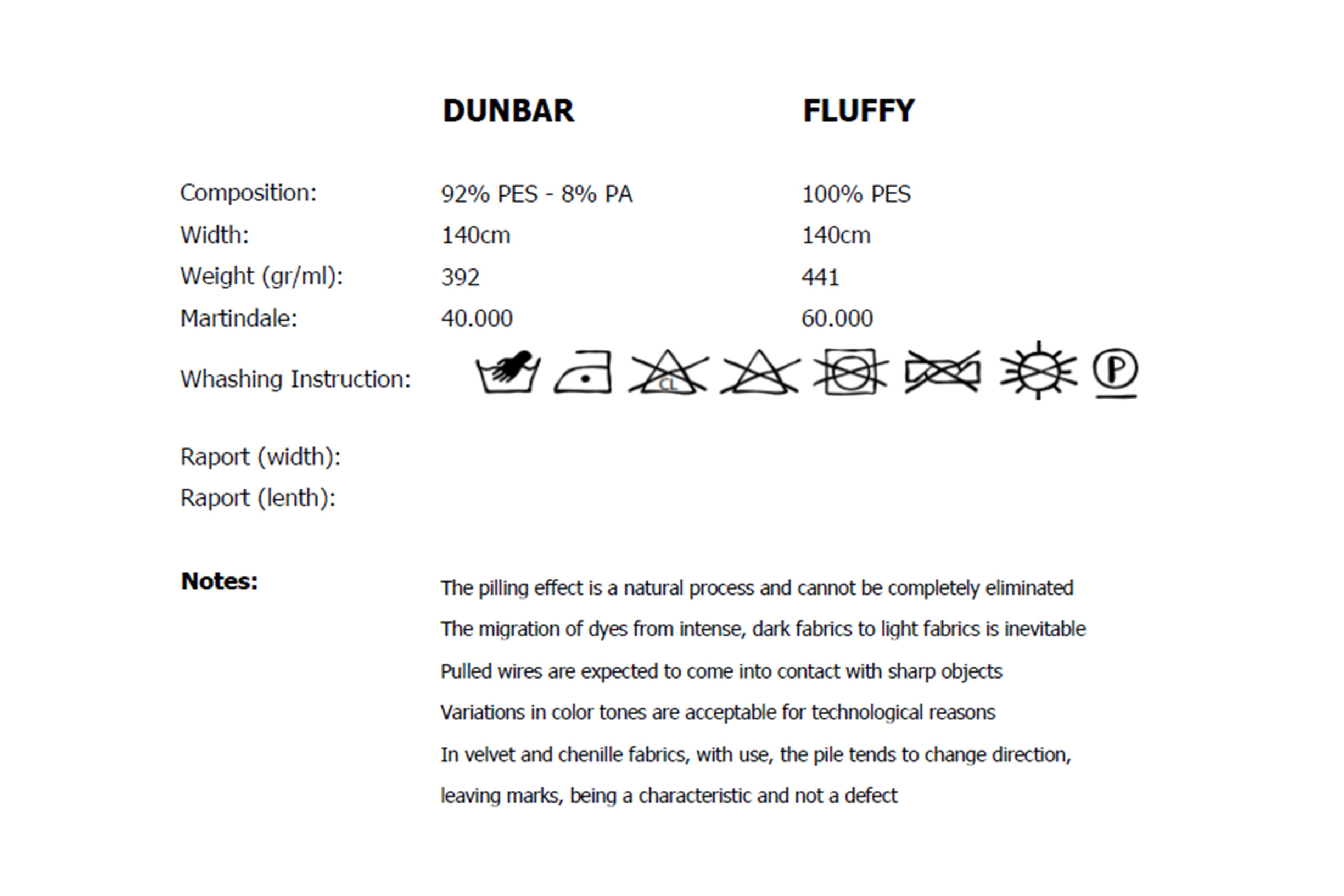
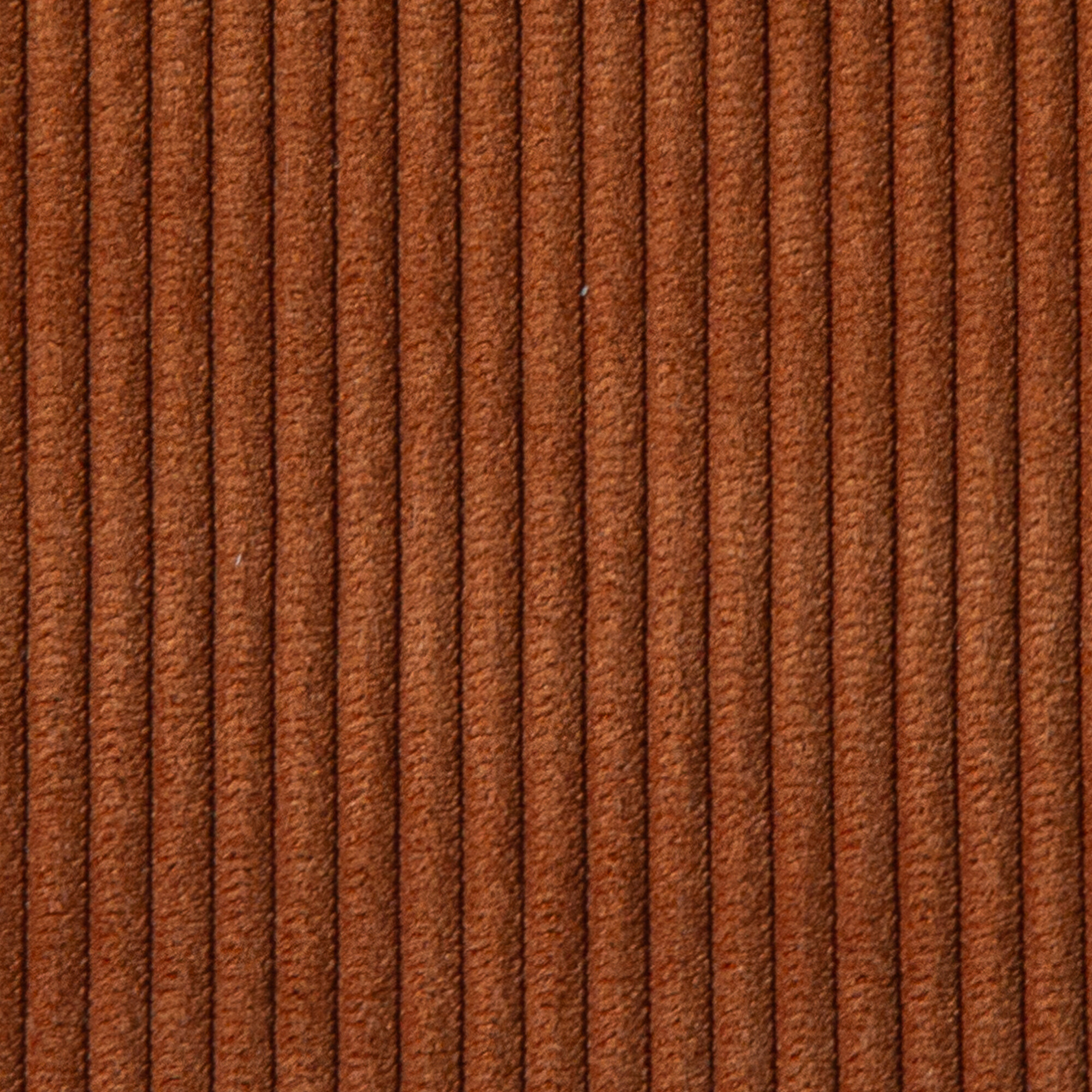
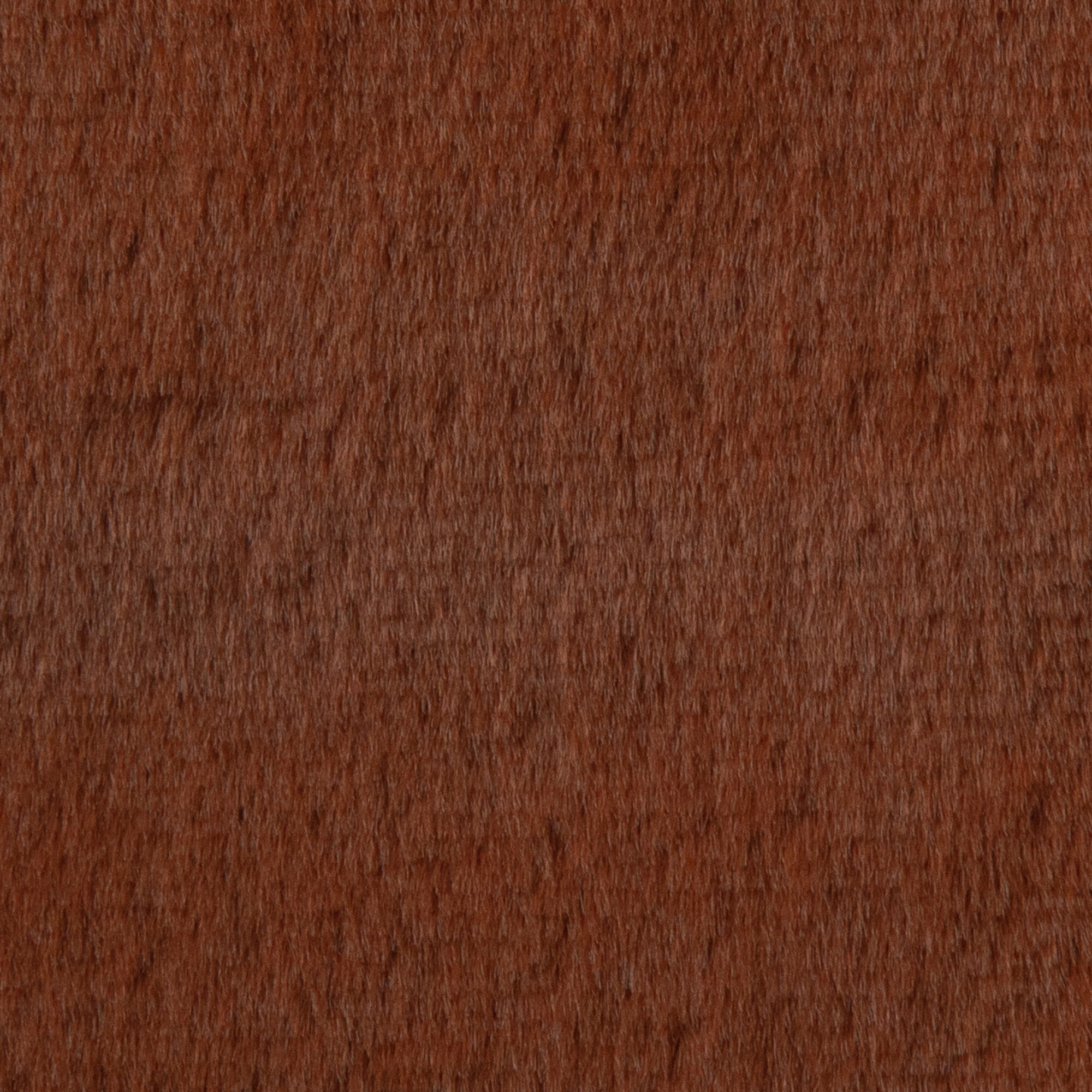
Finally, it is important to choose fabrics based on their interaction. For example, combining wool with velvet or cotton with more woven fabrics can create an interesting contrast visually and tactilely. Layering materials and mixing textures are effective ways of enhancing the warmth and aesthetics of the space.
Fabrics with specific characteristics, such as retaining heat and providing tactile comfort, are essential for creating spaces inviting relaxation and coziness. This article highlights 4 materials perfect for investing in the cold seasons.
Wool, a winter classic, is one of the most practical materials for keeping rooms warm during the cold months. Its natural thermal insulation properties make it perfect for blankets, pillows, and throws, ensuring both warmth and comfort.
What are the benefits of wool?
Heat retention
Durability
Natural and cozy touch
Where and how to use wool?
A wool blanket is perfect for decorating sofas and chairs. Combine it with a velvet sofa like the Al-Hijr from ALMA de LUCE to create an interesting contrast between textures.
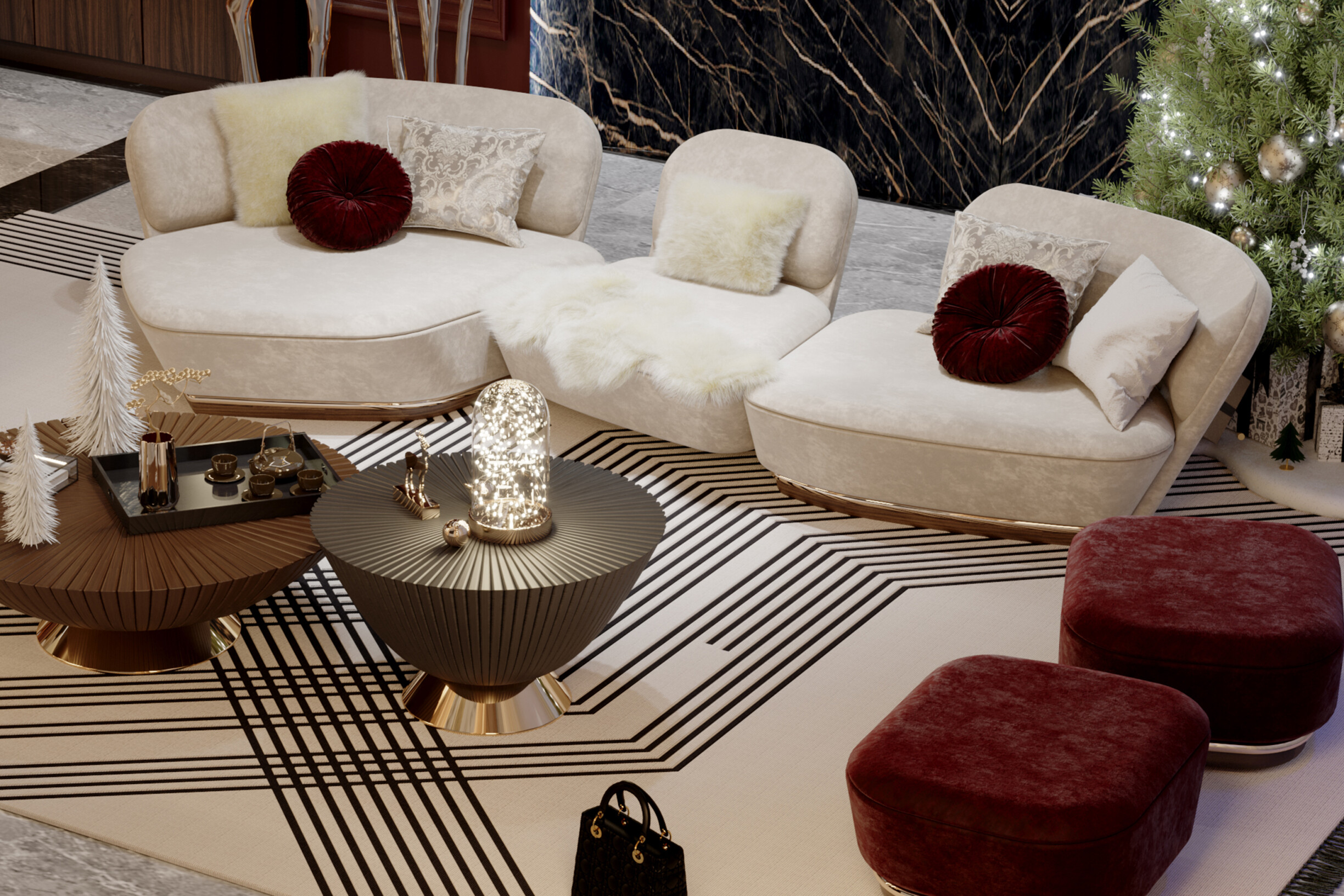
While cotton may be less effective at retaining heat than wool, its versatility and comfort make it a popular choice. Whether as additional layers in warmer spaces or lighter fabrics for cushions or curtains, cotton offers a feeling of softness and freshness, making it a great choice for a variety of design needs.
What are the benefits of cotton?
Soft feeling
Breathability
Versatility

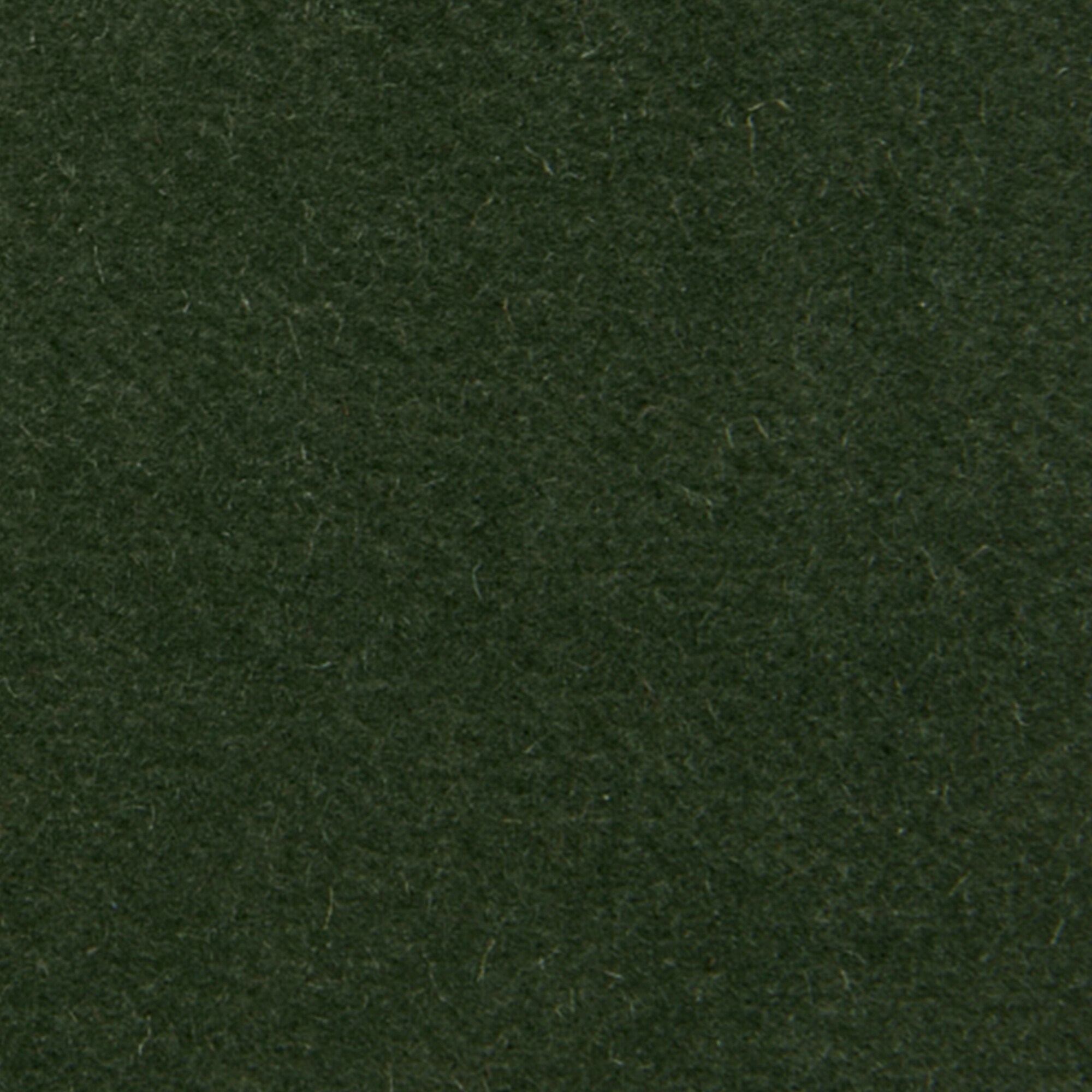
Where and how to use cotton?
Cotton cushions can be combined with wool or velvet blankets on sofas and armchairs, such as the Poseidon armchair by ALMA de LUCE, creating a light but cozy area. Additionally, cotton curtains can soften natural light in a room.
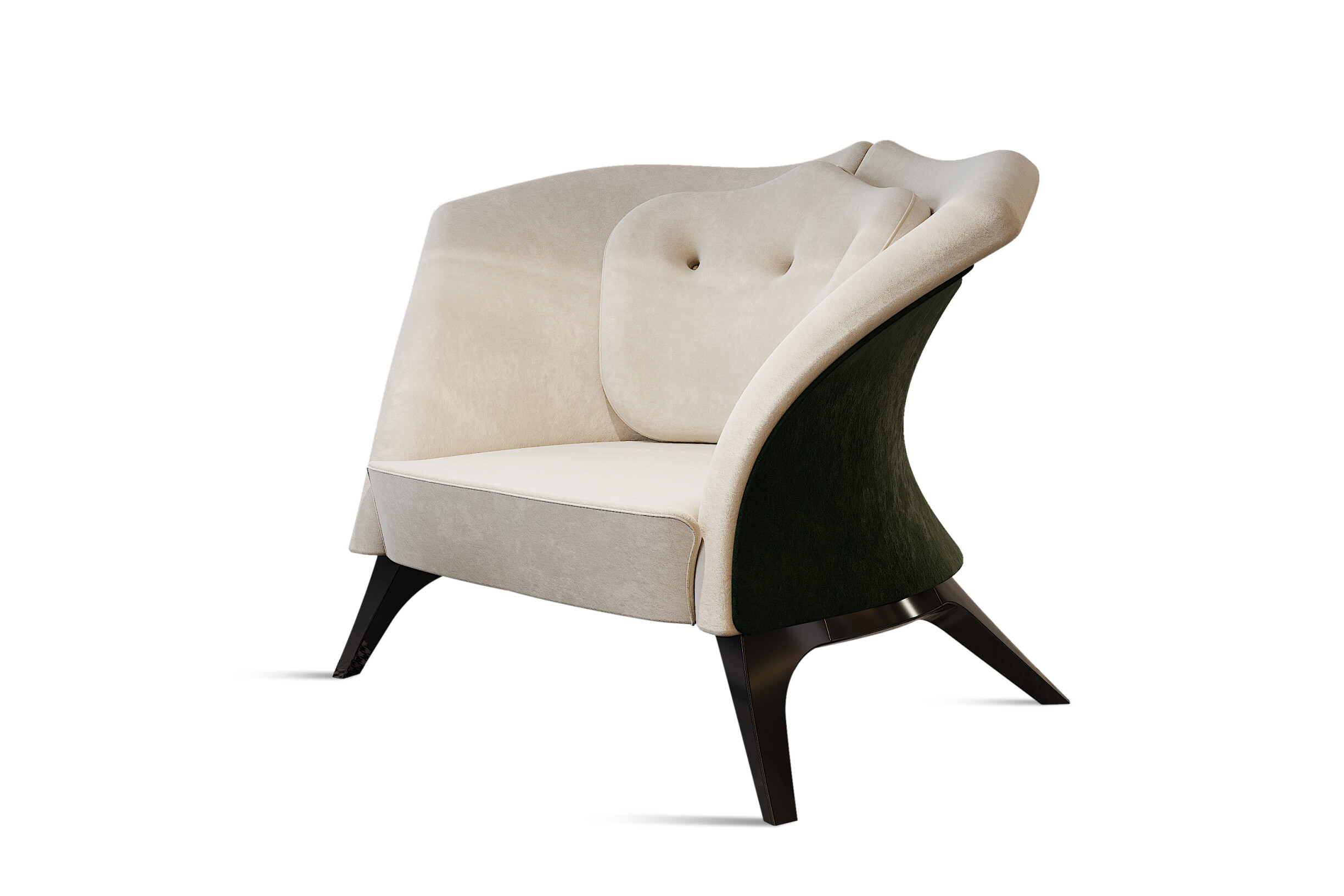
Velvet is a luxurious and cozy material with a luxurious aesthetic. Therefore, it is perfect for creating sophisticated and comfortable areas. The soft touch and rich texture add extra depth and charm to spaces. Velvet is excellent for creating a feeling of visual and tactile coziness, making it ideal for sofas, chairs, and cushions. Additionally, its ability to retain heat makes it an excellent material for the cold months.
What are the benefits of velvet?
Tactile comfort
Aesthetic depth
Luxury feeling

Where and how to use velvet?
The Kintsukuroi sofa by ALMA de LUCE, with its Red Dress velvet upholstery, is a perfect centerpiece for any living room. Combine it with cotton or wool cushions and a velvet throw to create a luxurious and cozy atmosphere.
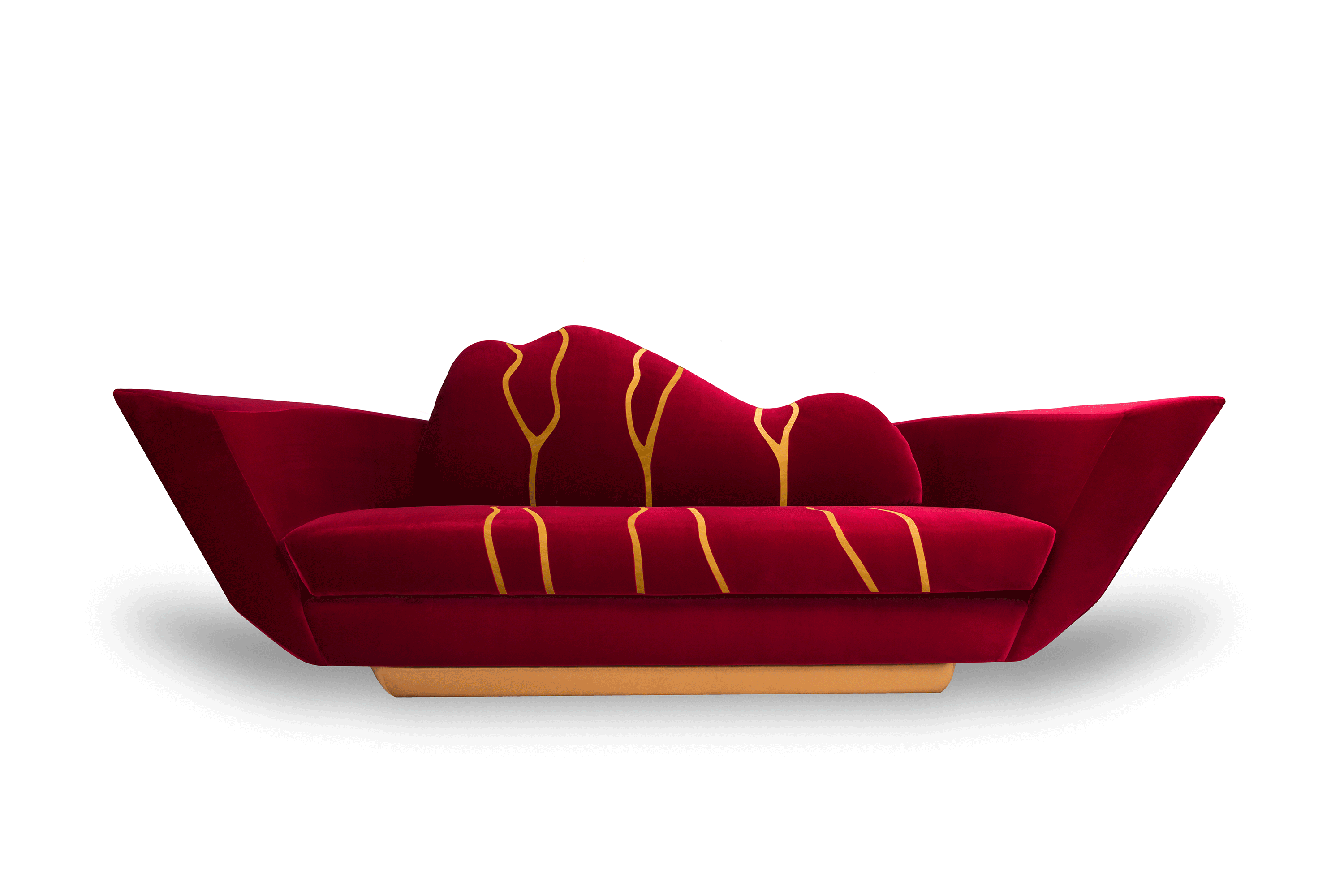
Synthetic leather, currently very popular due to the appreciation of sustainability in interior design, offers the same comfort and appearance as natural leather. With a soft and voluminous texture, synthetic fur is perfect for creating a cozy and luxurious atmosphere, especially when used in blankets, rugs, or cushions. Additionally, faux fur is more affordable and easier to care for than natural fur.
What are the benefits of synthetic leather?
Feeling of heat
Softness
Durability
Ease of maintenance
Where and how to use synthetic leather?
Pair a faux fur rug with velvet cushions or wool throws on a sofa for a warm, inviting visual effect. Additionally, synthetic leather blankets can be used on couches or chairs.
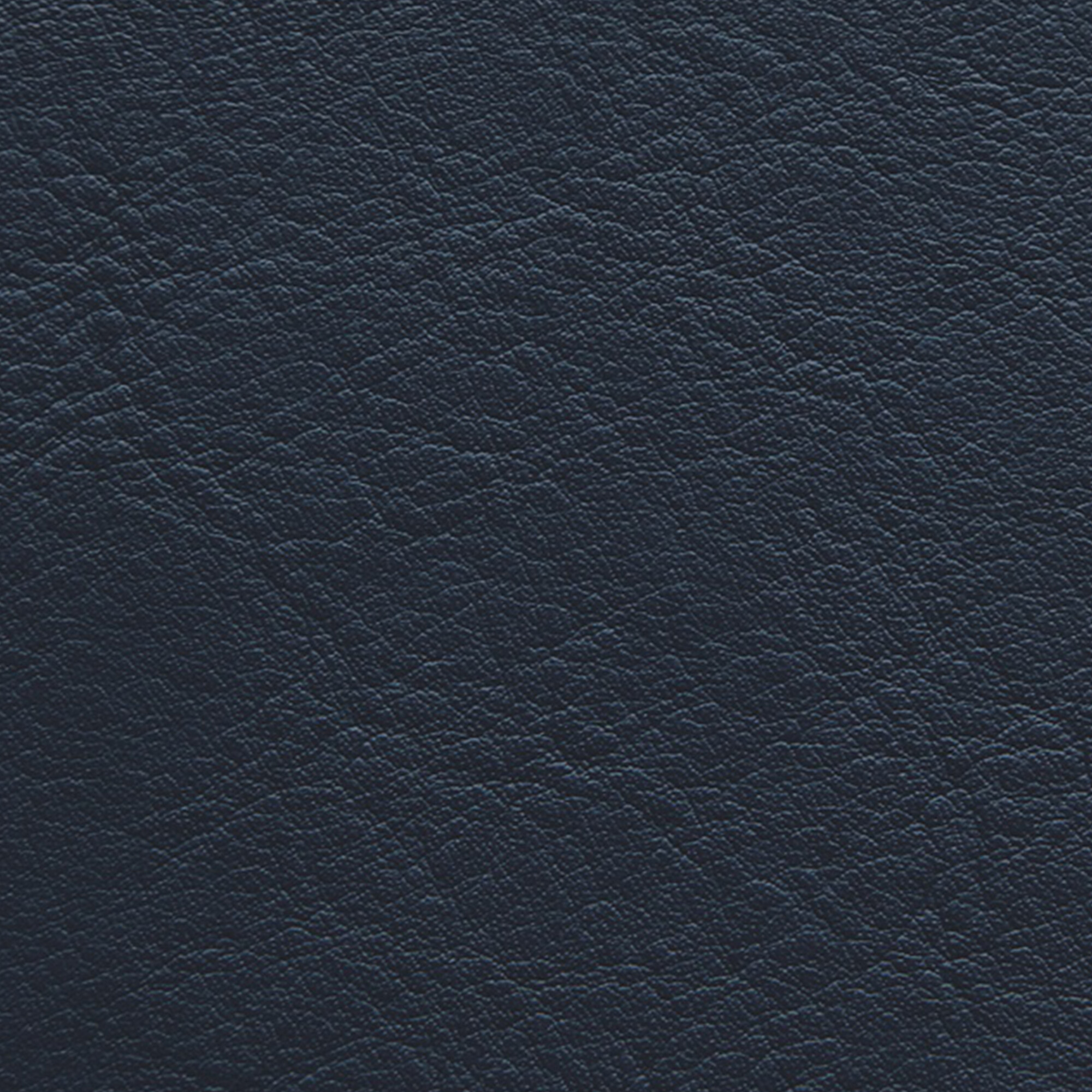
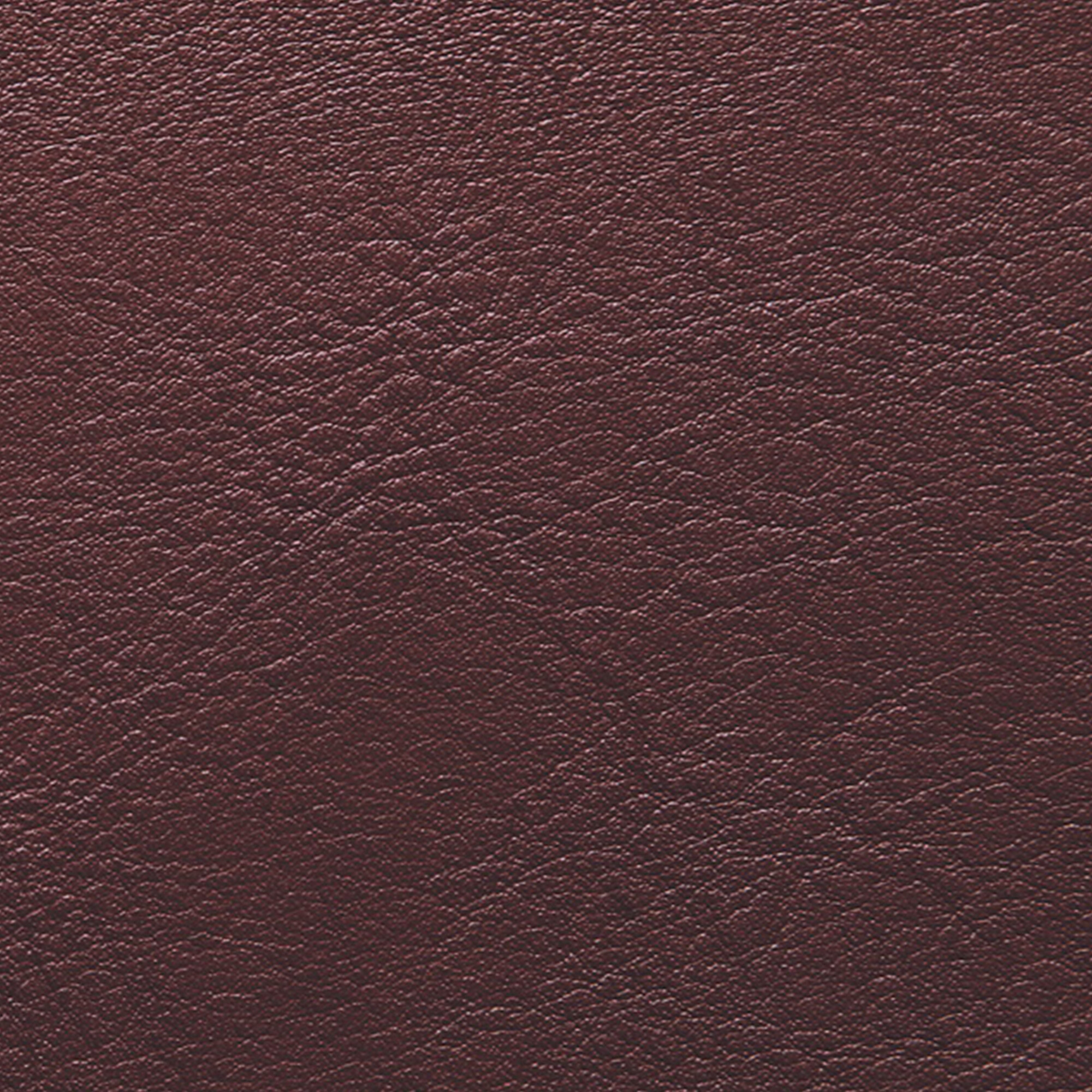
Combining fabrics and textures in winter can transform a space, creating a cozy and balanced atmosphere. Mix materials such as wool and velvet, using wool blankets on velvet-upholstered sofas to contrast softness and sophistication for a harmonious effect. Velvet cushions can add a touch of luxury, while wool provides much-needed warmth.
An interesting combination is also cotton with synthetic leather. Cotton, with its softness, is perfect for cushions and curtains, while synthetic furs create a voluminous and cozy effect on rugs and blankets. The key is to balance materials, using layering to add depth and keep the space visually inviting and comfortable.
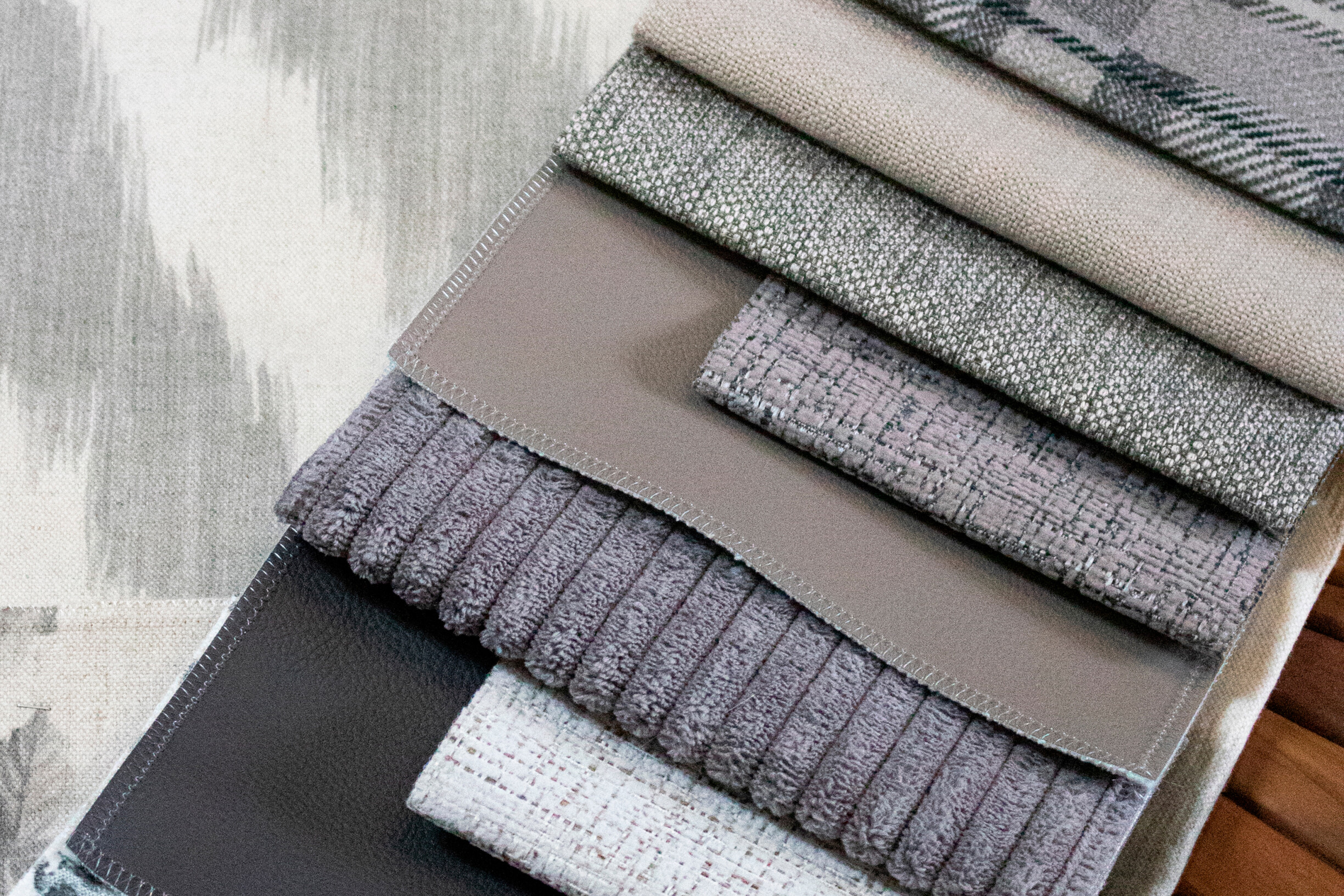
Layering, or overlapping fabrics, is an essential technique for creating more welcoming and visually interesting spaces during winter. Combining different layers of materials not only increases thermal comfort but also provides depth and aesthetic complexity to the space. Layering blankets, cushions, rugs, and curtains is an effective strategy for transforming an ordinary space into a warm and inviting haven.
When layering, consider different textures and colours to ensure a balanced combination. For example, a wool blanket can be layered over a velvet sofa, while cotton pillows complete the space. Combining heavier fabrics, such as wool and velvet, with lighter materials, such as cotton, creates a feeling of coziness without compromising visual fluidity. Additionally, using multiple layers of textures creates a pleasant contrast that makes the space more interesting and welcoming.
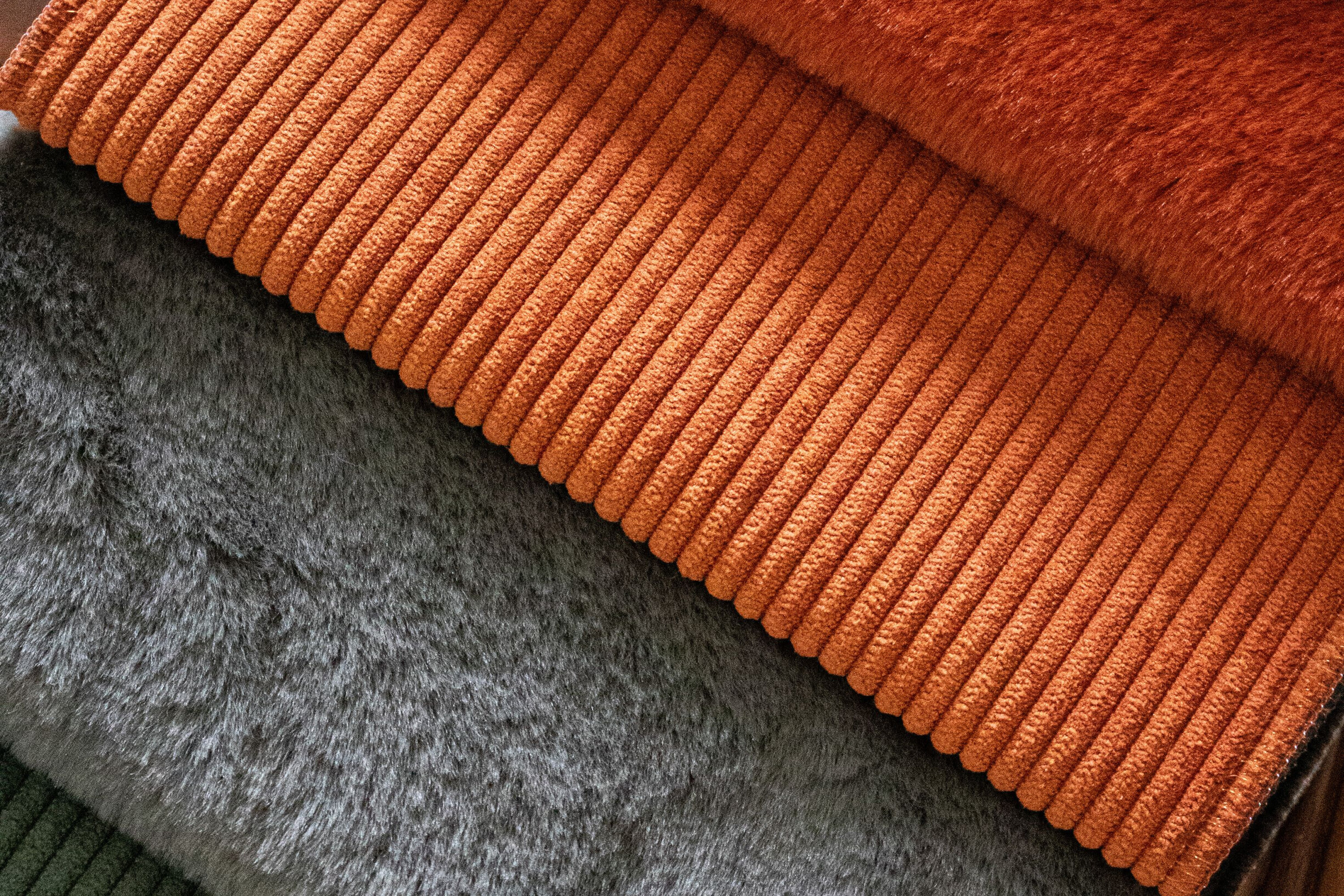
Choosing the right fabrics and textures is the secret to transforming any space into a cozy haven during the winter. Materials such as wool, velvet, and cotton, combined with layering and well-selected pieces, guarantee comfort, elegance, and functionality.
With attention to detail and careful choices, your interior designs can warm the spirit and bring a new dimension of comfort to colder days.
Did you like this blog article? Stay tuned for more information and curiosities from the universe of architecture, interiors, and construction!
You can also follow us on Instagram, Facebook, and Pinterest for updates and news.